The second half of the 2019 field season was as interesting as the first.
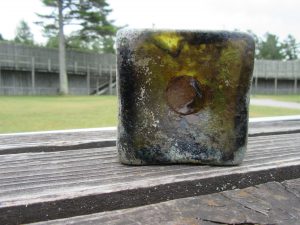
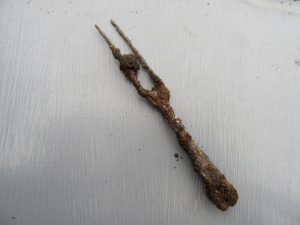
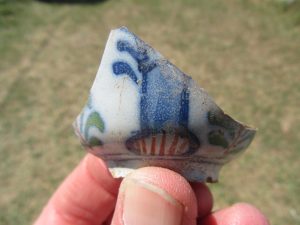
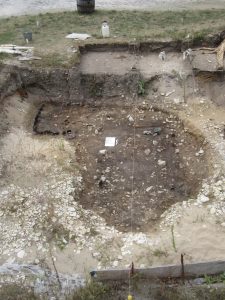
The central area continued to yield a variety of larger artifacts, including the base of a dark green case bottle, a two-tined fork, and a larger fragment of a polychrome (multi-colored) tin-glazed earthenware teacup. Case bottles are named for their square shape, which fits well in a packing case. This fragment is British, and most likely was imported containing an alcoholic beverage. Bottles on the edge of the empire were reused for many purposes until they broke. The teacup could be British, French or Dutch. By the end of the summer, this area formed a distinctly darker, rectangular area, bordered by a few charred wood posts, suggesting an additional root cellar.
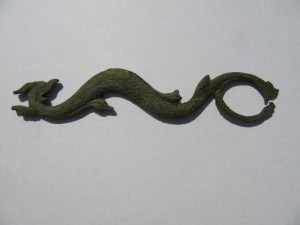
A brass sideplate from a British trade gun was found along the west edge of the original root cellar in the southeast corner of the house. It was missing the tangs where screws would have held it to the stock of the firearm opposite from the flintlock mechanism.
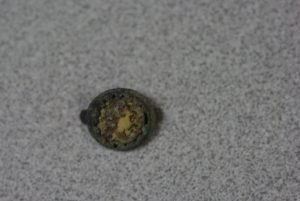
The final unusual artifact of the season was a ring fragment found near a lone floor support post near the hearth. The ring was brass with a cameo-type bust on the bezel. A similar ring was found during the excavation of the southwest rowhouse in 1962. The ring found in 1962 is currently on display in the commanding officer’s house. The one from this summer will require conservation before it can be exhibited.
The field season ended August 24 and the site is now protected for winter under a layer of plastic sheeting covered with bales of straw. Now the winter work begins of cleaning, labeling, sorting, counting and identifying everything we found this summer. Stay tuned in the spring for any interesting discoveries made in the lab.









